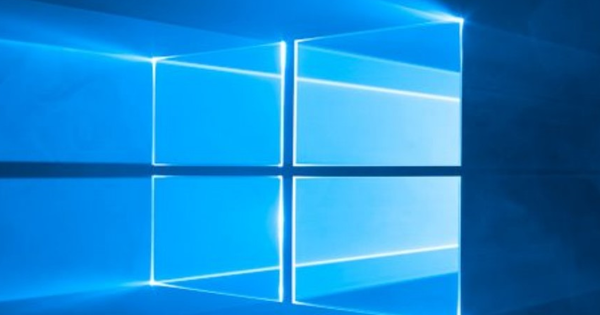We can no longer do without the context menu: the menu that pops up when you right-click on the desktop, a disk, a file or a folder. After all, you will only see functions that apply to the item you click. Is your right click 'polluted' by unnecessary options? Or are there options that you would like to have? We're going to set up the context menu ourselves!
1 Right Click Tweaker
To add your own options to the right click menu there is Right Click Enhancer 4.5.5. The basic version we discuss here has seven options and is free. After the installation you can set the language to Dutch. The top button Right Click Tweaker adds nineteen commands to the context menu. It is worth taking a look at these functions, because there are interesting finds among them. For example, the command to encrypt files and folders so that other users cannot access these items.

2 Create List and Smart Rename
- There are more clever items to be found among the nineteen assignments. Put a check in Right Click Tweaker Control Panel then you open that menu from now on via a right-click. Put a check in front of the option Create a list of files, this command will give you a text file in Notepad where all the files are listed. And if you have a folder with, for example, jpg files that have a cryptic name in the style of DSC_0022, then you change via the function Smart rename the names of those files to for example BirthdayGrandma_0022.

3 Send To Manager
Do you miss the assignments Copy to folder and Move to folder in the context menu of Windows explorer? With the Send To Manager (from the main menu) of Right Click Enhancer add new shortcuts to the context menu to locations or files on the hard drive. The option Copy to for example, link to folders that are not currently in the context menu. You can de Send To Manager can also be used to activate applications, so that you can open files directly in these applications with the right mouse button.

4 File Type Editor
A somewhat strange option within Right Click Enhancer (because it has little to do with the context menu) is the File Type Editor. When you install a program like VLC Media Player, you have to choose whether you want to open certain files in this media player or in Windows Media Player when you double-click on such a file. For example, if you want regular wmv files to open automatically in Windows Media Player and not in VLC, you can change the file association in the File Type Editor. You select the desired file association in the left column and then click the gear button / Edit file type.

5 New Menu Editor
When you do not right-click on a file or folder in Windows Explorer, but on an empty area, you can use the command New immediately start a new file in an application listed in the contextual menu. With the New Menu Editor you will see the list of applications in which you create a new document in this way. Those applications are in the list true. To uninstall an application you never use, click on it and use the button Remove. Add file options from the list False, you do in the opposite direction. First select the file type and then click the button true.

6 God Fashion
In Windows 10, the settings are divided between the Settings and the Control Panel. But there's also a so-called 'God Mode' that collects a lot of useful features for the PC, some of which are not found in these two places. With Right Click Enhancer, add God Mode to the context menu by de Right Click Tweaker and activate the bottom option there. In previous versions, that option was also called God Fashion, now there is the name Control Panel++.

7 Six contexts
Easy Context Menu 1.6 modifies the context menu in a different way. When you open the program, you enter a simple list interface, which is divided into six sections. Each section contains a number of sub-sections and refers to the context in which you use the right mouse button: Desktop, My Computer, Disks, Folders, Files and Exe files. To add some options to the context menu when you click on the desktop, open the Desktop Context Menu group. To add functions when you right-click on a disk, open the Disks context menu section.

8 Shutdown options
With the ninety options you can add with this tool, you won't miss much anymore. You will find assignments like sticky notes, Show hidden files, Copy contents of folder list, Become an owner and much more. In the Context menu Desktop there are, for example, three subgroups Tools, System Tools and Shutdown options. Via the latter you use the right mouse button on the desktop to lock, put into sleep mode, shut down or restart the computer. Easy Context Menu allows you to access functions with a minimum of mouse movement. Every time you have checked or unchecked the desired options, don't forget to click the first button at the top: Apply changes.

9 Add programs
With this tool you can easily add a program to the right mouse menu. That way you're basically using the right mouse button as a launcher. For that you open the List Editor: that's the third menu button from the left. Then drag the desired program to the place in the list and release it. Press the button Saving Changes and close the List Editor. Then click on the button Apply changes top left. You will see that the newly added program is then part of your right-click menu.

Prune context menu
So far we have made the right-click menu longer and longer. In addition, it happens all too often that software vendors add 'their' items to this menu unsolicited. Context Cleaner allows you to remove context menu items in Windows. You first select a context item on the left, then all active context menu items appear in the right pane. You can select and disable, enable and delete those items. It's a good idea to disable an item before permanently deleting it, because deleted items don't just come back. If you do not notice any adverse effect on your daily functioning after a few weeks, you can always remove these items permanently.

10 Add submenu
When you want to place different applications in the context menu, it is useful to add submenus. For example, you can keep all graphics programs together in a submenu and also all web browsers. To do that, open the List Editor and then choose at the top Contextual target file one of the six main categories. In the box Title give the new submenu a name. You can also indicate that the new submenu will appear higher or lower in the list. You have to save these changes twice again.

11 Context Menu Cleaner
Should you have proceeded a bit too fast and the context menus have become much too long due to the added functions? Easy Context Menu also provides the function Context Menu Cleaner to remove items from this menu in a very easy way. That's what the button with the broom is for. Just select the option you want to get rid of, giving you the option to disable the menu item (until you later re-enable it later in the same way). Or you use the button remove to permanently delete this menu item.

12 Clear all
If you want to go back to the basic settings of the context menu in Windows, click on the second button: the one with the prohibition sign. In the Dutch translation of the software, this button has been given an incorrect name. When you hover over it, you read Context Menu Exe File. If you change the language of this tool via the Options put it back in English for a moment, you will read the correct name of this button: Uninstall all.

13 Save settings
Easy Context Menu is a portable program, which means that it is possible to use the app from a USB stick. All settings also end up in the folder where the program is located: the folder EcMenu_v1.6. If you are satisfied with all the settings you have made, you can save them via File / Save your settings. Later you can always via File / Load Saved Settings return to the saved settings with one click. When you experiment further with this tool, you can also use F5 or Scan changes return to the saved state. By the way, it is not possible to save different settings in profiles or sets, so you can only save one group of settings at a time.


